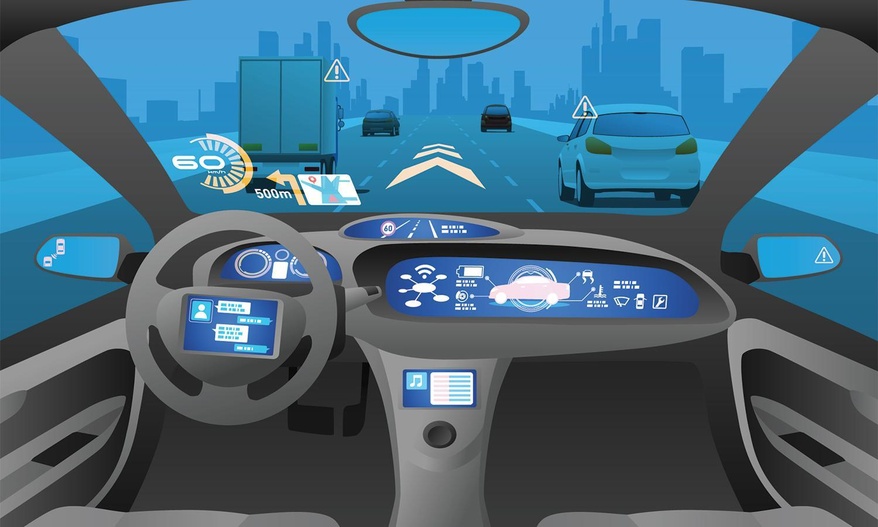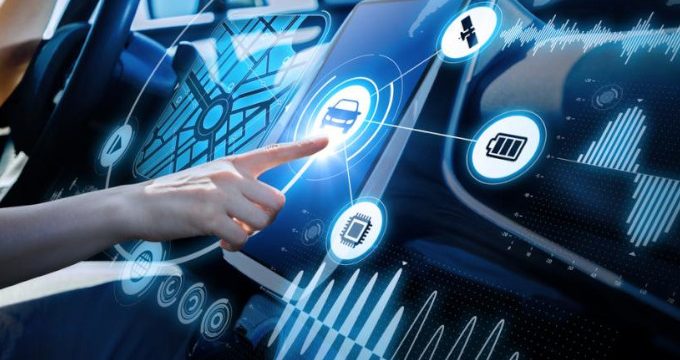Widely adopted across a number of industries, IoT is rapidly unlocking its transformative potential. Its disruptive effect is so powerful, experts today talk about the 4th Industrial revolution impacting business operations, daily lives and work. In automotive industry IoT is finding its widest application: the demand for connected cars, in-vehicle infotainment and communication systems is extremely high around the globe. By 2023 the global market for IoT in automotive is set to increase to $104 billion with estimated CAGR of 27,55%, as reports researchandmarkets.com.
In this article, we will examine how IoT is revolutionizing automotive operations, look at its use cases and uncover its challenges.
IoT Application In Automotive
Sensors, beacons, IoT software and connectivity devices are now transforming cars into high-tech vehicles. Moreover, IoT is also impacting the transportation, road infrastructure and the way we drive. Let’s now look at some of the most spectacular applications of IoT in automotive.
Connected cars
By 2040, the number of cars worldwide will double and most of them will use IoT connectivity. Due to IoT, today’s cars are equipped with WiFi hotspots, although IoT devices can also connect through 3G, 4G and 5G. In-vehicle communication and vehicle location tracking have already become mainstream. What’s coming up is highly advanced connectivity of vehicles to infrastructures, networks, pedestrians and other vehicles.
The 3rd Generation Partnership Project uniting telecom companies has recently established a Cellular Vehicle-to-Everything (aka C-V2X) standard. This standard operates in two modes (device-to-device and device-to-network) and supports V2V (vehicle-to-vehicle), V2I (vehicle-to-infrastructure), V2N (vehicle-to-network) and V2P (vehicle-to-pedestrian) communication.
Enhanced connectivity can be beneficial in a number of ways: real-time traffic reporting, alerting pedestrians, avoiding collisions, advanced routing and prioritizing traffic, etc. Applied in business, it’s already revolutionizing fleet management in the transportation industry as well as an inventory and asset management in car sales industry. IoT beacons notify users of a car’s physical location as well as its condition (out of gas, needs repairs, etc), which makes for increased operational efficiency and brings better time-to-value.
On both business and consumer level, IoT connectivity enhances security: with IoT beacons in place, stealing a car now becomes increasingly difficult, since owners get instantly notified on its location.

Smart infrastructure
Obviously, though, ensuring this level of connectivity will imply radically innovating road infrastructure. To support V2I connectivity as well as the emergence of self-driving vehicles, and to ensure safe driving experience, infrastructure itself has to shift from conventional to advanced. Ultimately, it should be capable of communicating with vehicles without human intervention. Street signs, road markers and traffic lights will act as an integral part of smart road IoT infrastructure where all things are interconnected. The road infrastructure will collect info from vehicles and devices about traffic situation and weather conditions and warn drivers about potential hazards.
An example of such smart road is a highway corridor connecting Rotterdam to Vienna. Created as a result of joint efforts of transport ministries in Austria, Germany and Denmark, this smart infrastructure now ensures road safety and smooth traffic flows between the tree states. Both human-driven and electric cars may travel this road and enjoy travel benefits.
In the USA, the Virginia Smart Road (Montgomery Country, Virginia), is now acting as a testing ground for innovative road infrastructure technologies. Maintained by the Virginia Department of Transportation, the road now only stretches for 2.2 miles, but will eventually extend to connect Route 460 to Interstate 81.
OTA Updates
The proliferation of IoT connection protocols is already enabling over-the-air updates of the car software and wireless connection to data platforms. From a consumer perspective this means assisting drivers in downloading traffic and map updates, bug fixes and security improvements.
OTA Connect technology by HERE is an example of an open-source automotive IoT solution for easy transfer of software, firmware and data. HERE Connect also uses an advanced automotive security framework to prevent intrusions and eliminate threats.
The demand for software-centric cars and the adoption on Navigation Data Standard (NDS) has inspired many automotive manufacturers to reconsider data formats and standards they use and to adapt production lines to meet new requirements.
Predictive maintenance
Analysing data provided by IoT devices helps monitor the state of the car software of equipment and notify the driver about the need for repairs. Widely applied in business as well as in consumer automotive, this feature helps avoid unexpected breakdowns, plan expenses and schedule repairs before any incident occurs. For transport or car lease companies running large fleets of vehicles, this IoT feature could prove indispensable.
Applied in the automotive industry, IoT delivers better driving experience and has a great number of consumer and business benefits. However, there are roadblocks standing in the way of its massive adoption in automotive, including, but, surely, not limited to:
Legacy systems – companies may lack expertise and budget to radically replace legacy hardware and software systems. Old equipment may function well in itself, but still not support the IoT functions.
Compatibility – The unified standards for IoT in automotive are still in the development stage. Needless to say, compatibility issues may hinder IoT adoption quite critically.
Security – There are numerous concerns about security, since increased number of connected devices leaves the car system open to potential intrusions and attacks. Security standards for IoT in automotive are also currently in their development stage, and consumers are in dire need of custom security solutions.
Lack of knowledge – not only consumers need to learn more about IoT features and benefits, car manufacturers, vendors, automotive and transportation industry players yet have little understanding of business models for IoT, as well as the range of possibilities IoT technology may bring. Under these circumstances, consulting with a reliable IoT developer company could help learn more about existing options.
At VARTEQ we have extensive experience in developing custom IoT solutions for the automotive industry. We start with carefully analyzing your business needs and specifics, revenue sources and how IoT can help eliminate bottlenecks in your current business workflow. We also offer end-to-end IoT development, from software solutions to custom device prototyping and assembly.
Want to learn more? Contact us now for a free expert consultation!

